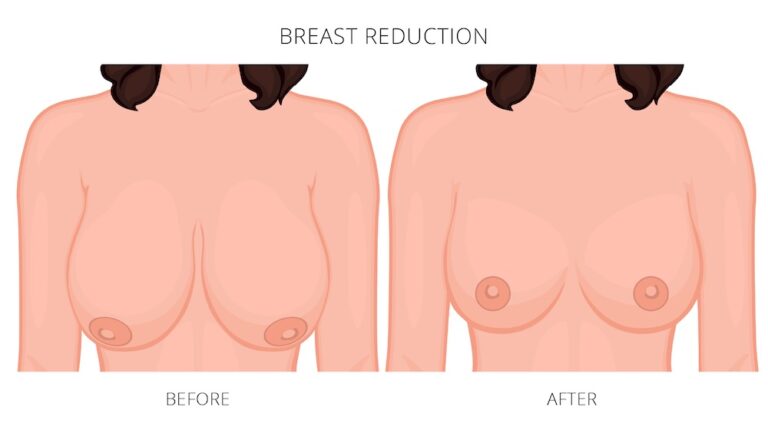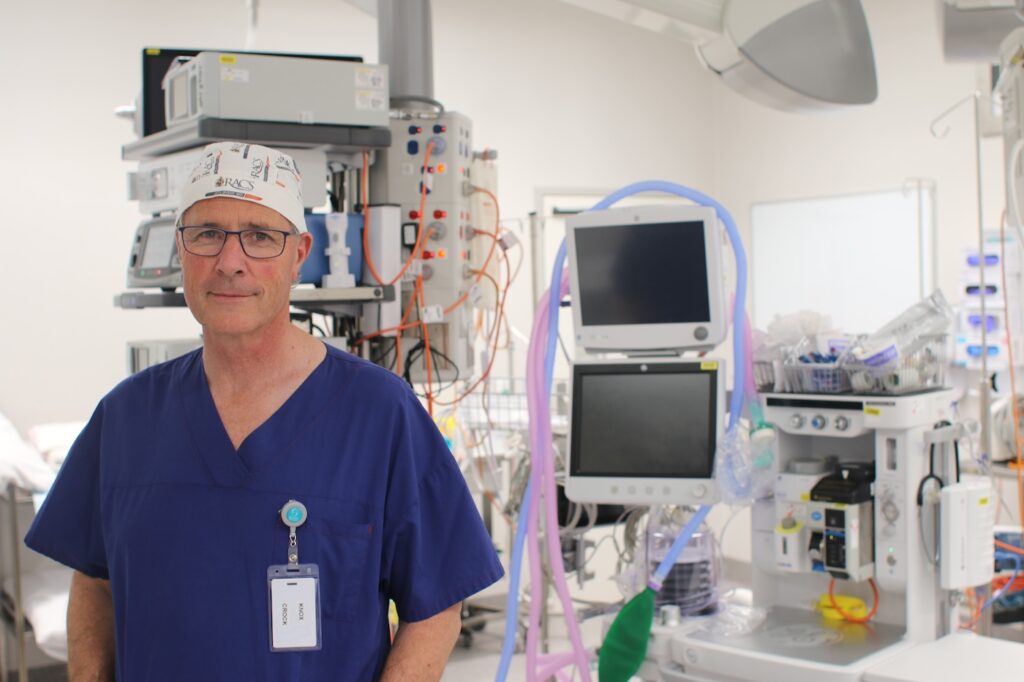Breast Reduction Surgery Melbourne
Reduction mammaplasty, also known as breast reduction surgery, is an operation that removes breast tissue, fat and skin from the breasts.
Breast reduction surgery, whilst in some minds is classed a cosmetic operation, is in fact a complex reconstructive surgery procedure that offers tremendous benefit for patients suffering from a condition called ptosis gynecomastia, and the surgery is well known to greatly improve quality of life.
A little-known fact is that breast reduction surgery is considered one of the top three operations to improve quality of life, along-side hip and knee replacement!Whilst a fully trained plastic surgeon has undergone rigorous training to focus on restoration of tissues, when it comes to breast reduction surgery, form and function are inseparable.
Make an enquiry or Book a Consultation with us!
Or call us on 03 9800 0344
"*" indicates required fields
How can Breast Reduction Surgery help?
Patients who present for breast reduction typically suffer from back and neck pain, they may have rashes under their bra line, and are often in pain both in their breasts as well as in various parts of the spine. Large breasts are a significant source of these medical problems, and the weight of breasts commonly lead to shoulder pain either directly, or as a consequence of bra straps cutting into shoulder tissues as the day progresses. Patients with shoulder arthritis are significantly affected by having large breasts.
Everday tasks such as finding suitable clothing, especially swimwear and undergarments, can prove challenging. Engaging in common physical activities such as sports, swimming, walking, or jogging may be hindered.Additionally, the strain from large breasts on neck muscles can lead to or worsen migraines, or even contribute to fatigue.
The purpose of Breast Reduction/Mammoplasty surgery is to relieve the burden of sizeable, heavy breasts, while also tackling issues of breast ptosis (drooping/sagging), physical discomfort, and skin irritation. A combination of these factors is usually what leads women to enquire about breast reduction surgery.

Risks
Like any other surgery breast reduction surgery shares the same risks. Some include bleeding, infection, and adverse reactions to anesthesia. Other risks include:
- Temporary bruising
- Scarring – scars will generally fade, but not completely disapear. Over time, they will decrease in size and blend to your skin. Incisions are placed in positions that aren’t visable to to minimize the appearance of scars.
- Difficulty or inability to breastfeed – This is especially the case if your nipple was repositioned during the surgery, as this would have interfered with the nerve supply to the nipple and areola.
- Differences in the size, shape, and appearance of both breasts.
- Not being 100% happy with the results – Everyone’s experience with breast reduction surgery can be unique, and the reasons for dissatisfaction can vary widely based on personal, physical, and psychological factors.
- Losing the nipples and/or skin around the nipples along with loss of feeling. This is rare.
Preparing for the breast reduction procedure
Before you have surgery we will:
- Review your medical history and overall health – this is where we will note any underlying conditions that can affect your safety or outcomes of the surgery.
- Discuss your desired breast size and appearance post-surgery – It’s important to set realistic expectations & identify your personal preferences.
- Detailing the surgery procedure, its risks and benefits.
- Conducting a physical examination and measurement of your breasts to esure that the breast reduction surgery is performed safely, effectively, and with outcomes that meet expectations.
- Taking photographs for your medical record – this is important for many reasons, mainly for preoperative planning, medical documentation & postoperative comparison.
- Explaining the anesthesia used during surgery – this is standard practice for all surgeries. This is to help with alleviating anxiety leading up to surgery and make sure we are aware of any allergies or health issues and avoid adverse reactions.
To plan for breast reduction surgery, you may need to:
- Undergo a mammogram so the breasts can be examined for signs of cancer or other abnormalities.
- Abstain from smoking for at least six weeks before and after the operation. This will help healing & reduce risk of infection along with many other reasons.
- Avoid taking aspirin, anti-inflammatory medications, and herbal supplements to minimize bleeding risks during the procedure.
What you can expect
Breast reduction surgery is usually done under general anaesthesia in a hospital or dedicated surgical centre.
Typically, the surgery includes:
- Creating an incision around the nipple and areola, extending down each breast
- Removing surplus breast tissue, fat, and skin to decrease breast size
- Reshaping the breast and repositioning the nipple and areola
Usually, the nipple and surrounding area remain attached to the breast. In cases of significantly large breasts, the surgeon might need to detach and then reattach the nipple.
While the surgeon will aim for symmetry, it’s common for breasts to vary slightly in size and shape post-surgery. The areola may also be reduced in size. Incision scars will diminish over time but won’t disappear entirely, resulting in noticeable scars around the nipple. Understanding and accepting these scars is an important aspect of the breast reduction process.
Effective scar management is crucial for a satisfactory outcome, though it’s essential to recognize that breast shape and scarring are two distinct aspects of the surgery.
Post-procedure care
Immediately after the surgery:
- Your breasts will be wrapped in bandages and supported by a surgical bra. This will provide necessary support during the healing process as well as assist with swelling and bruising.
- Drain tubes under each arm will be placed to remove excess blood or fluid, as there’s a risk of blood and other bodily fluids accumulating in the spaces where the breast tissue has been removed. Having the drain tubes here help with the healing process and reduce the of infection.
- You’ll receive pain medication and antibiotics to reduce infection risk. These will be taken immediately after surgery, and you may continue to take medications as needed for the next couple of weeks.
In the initial days or week after surgery:
- Expect tenderness or pain in the breasts, which should be monitored to distinguish between normal post-surgery discomfort and complications needing urgent attention.
- Experience swelling and bruising.
Physical activities will need to be limited for 4 to 6 weeks to aid healing.
Continue to wear a recommended surgical bra to support healing and minimise swelling.
You’ll have a follow-up appointment to monitor your recovery, and our nursing team will assist with your scar management program, key to achieving your desired results.
Outcomes of successful breast reduction surgery
Reduction of physical discomfort such as back, neck, and shoulder pain. It may also enhance your ability to participate in physical activities that were uncomfortable previously. As well as improved confidence, and body image.
Results are immediately noticeable, but it may take months for swelling to fully subside and scars to lighten. Results are long-lasting but factors like aging, weight changes, and pregnancy can alter the breast shape and size.
Dr John Crock
No. MED0000991852
Dr John Crock is a Hand and Plastic Reconstructive Surgeon who is qualified with MBBS, DIPANAT, MD and FRACS.
Dr Crock completed his medical qualifications at Melbourne University and gained further experience through a fellowship with the Royal Flying Doctor Service, serving in the Kimberley Ranges of Western Australia, particularly with the Indigenous population. His extensive expertise includes treating skin malignancies and reconstructing hand and orthopaedic injuries.
Throughout his career, Dr Crock has been recognised for his contributions to medical research and surgical excellence. His awards include:
- The Surgical Research Society’s Young Investigator Award
- The Plastic Surgery Education Foundation Award (USA) in 1989
- The Johnson & Johnson Clinical Research Award
- The Australasian Plastic Surgery Registrar’s Research Award in 1992
Dr Crock’s dedication to both his field and patient care has earned him a prominent reputation in the medical community. Book a consultation with Dr Crock today.



